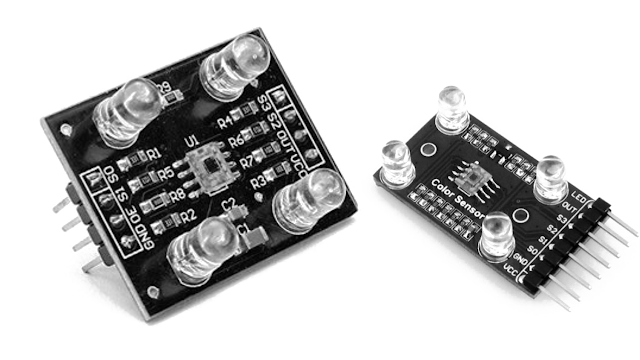What is Color Sensor : Introduction, Working, Example & Its Applications
Color Sensor
A colour sensor is a type of "photoelectric sensor" which emits light from a transmitter, and then detects the light reflected back from the detection object with a receiver.
A colour sensor can detect the received light intensity for red, blue and green respectively, making it possible to determine the colour of the target object.
What is a Color Sensor?
A color sensor detects the color of the material. This sensor usually detects color in RBG scale. This sensor can categorize the color as red, blue or green. These sensors are also equipped with filters to reject the unwanted IR light and UV light.
Color Sensor Diagram
The circuit of the color sensor contains sensitive filters, sensor arrays, LED’S, target surfaces, and receiver. When the bright red light is illuminated on the object’s surface, the same red light is reflected and blue light is absorbed. This reflection and absorption are determined by the filters used in these sensors.
Working Principle of Color Sensor
To detect the color of material three main types of equipment are required. A light source to illuminate the material surface, a surface whose color has to be detected and the receivers which can measure the reflected wavelengths.
Colour sensors contain a white light emitter to illuminate the surface. Three filters with wavelength sensitivities at 580nm, 540nm, 450nm to measure the wavelengths of red, green and blue colors respectively.
Based on the activation of these filters, the color of the material is categorized. A light to voltage converter is also present in the sensor. The sensor responds to color by generating a voltage proportional to the detected color.
Another way of detecting color is by illuminating the material surface by Red, Blue and Green LED’s one at a time. Here the sensor contains no filters but light to voltage converter. The highest amount of light reflected back by the material surface while illuminated with the red, blue and green light is calculated to detect the color.
Examples
Some of the examples of color sensors available in the market are AS73211, TCS3200, TCS3400, TCS34715, TCS34727, colorPAL from parallax, SEN-11195, Lego Mindstorms EV3, etc…
Applications
Colour sensors are applied to measure, detect the color of the surfaces. These sensors have a wide range of applications in industrial, medical and security systems.
Some of the applications are the
light color temperature measurement, RGB LED consistency control, Medical diagnosis systems, Health fitness systems, Industrial process control, etc…
The applications of the color sensors include the following.
- Grading of colored products determines coded marks, detects the data codes on a package
- Color detection and color identification
- Used in image processing, and digital signal processing and object identification
- Used in true color Recognition
- Distinguishes different shades of colors.
- Textile industries, automotive industries, the food industry, printing industries, the pharmaceutical industry, etc.sed in quality control in visual inspection tools – monitor the color changes
- Process controlling, production and quality assurance
- Controls, stores and evaluates the visible colors.
- Spectral sensing for color measurement
- Detection of the environment.



Comments
Post a Comment